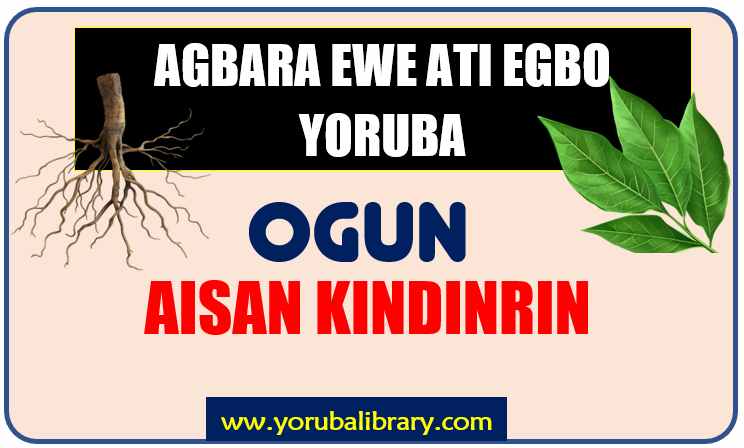
support@yorubalibrary.com
+2348073529208, 07038599574

Àìsàn Kindinrin (Kidney disease) is one of the serious health conditions that Yoruba elders recognized through careful observation of how the body manages waste and fluid balance. In Yoruba worldview, the kidneys are seen as a vital cleansing system of the body, and when they fail to function well, the whole body begins to show troubling signs.
Unlike modern biomedical terms, Yoruba people described the illness through changes in urine, swelling of the body, weakness, and inability to carry out daily tasks. The condition was considered dangerous because it could gradually weaken the person until life itself became threatened.
Disclaimer
Yoruba Library and its Team will not be held liable for improper usage or any loss arising from improper use, wrong application, inability to find needed materials, or misinterpretation of this article. This article is provided strictly for guidance and educational purposes.
Symptoms of Kidney Disease
Yoruba healers observed body functions closely to know when the kidneys were weak or failing. They identified the following symptoms and patterns:
• Scanty urine: Passing only small amounts despite drinking enough water, a sign elders believed the kidneys were “blocked.”
• Frequent urination at night: Seen as a loss of control of body balance.
• Foamy or cloudy urine: Elders linked this with “bad substances” being released by the body.
• Pain or burning during urination: Interpreted as a sign of internal heat affecting the kidneys and bladder.
• Swelling of the feet, ankles, or face: Known as fluid retention
• Bloating of the stomach: Believed to show water not moving properly inside the body.
• Puffiness under the eyes: A telltale sign Yoruba elders often noticed in the morning.
• Persistent tiredness: The person tires even after little work.
• Loss of appetite: The person no longer desires food, even favorites.
• Darkening or dryness of skin: Seen as blood not being well cleansed.
Elders knew these were critical stages requiring immediate intervention.
How Our Forefathers Treated Àìsàn Kindinrin in the Past
• Application of steam baths to drive out excess body fluid.
• Strict dietary restrictions — avoidance of salty or heavy foods.
• Spiritual cleansing and prayers to restore body balance.
• Use of specific leaves, roots, and barks boiled into decoctions. Some potent leafs with record-breaking effectivenss which Yoruba elders have traditionally used in treating kidney diseases include:
1) Ewe Eruju
2) Ewe Odundun
3) Ewe Gbegi
4) Egbo Kokondo
5) Egbo Ewe Rinji
6) Ewe Jenjoko
7) Igi Ewuro
8) Epakun
Have you heard of Yoruba Herb Dictionary? This contains names of Yoruba Leaf, Roots, Barks, Characteristics, Properties & Identification with HD Pictures. Order below or download sample here
A-Z HERBS & LEAF DICTIONARY #4KOne Yoruba proverb says "Bí olóde ò kú, òde rè kì í wu Gbégi". Do you know that Gbégi is actually a leaf/plant? Get Yoruba Proverbs on Plants and Herbs, which is a collection of Untold Wisdoms Hidden in Leaf and plants comprising their Life Applications & Moral Teachings. Order below or download sample here
YORUBA PROVERBS ON PLANTS #4KThe Healing Process in Traditional Practice
When treating kidney ailments, Yoruba healers observed a careful and spiritual process:
• Herbs and roots were gathered during spiritually significant times to enhance potency.
• Only pure and clean plants, often from trusted healers’ groves, were selected.
• Materials were boiled, pounded, or soaked depending on the desired effect.
• Chants and invocations were offered to call on divine assistance.
• Patients were closely monitored, and remedies were adjusted based on response.
Differences Between Yoruba and Modern Kidney Treatment
The Yoruba and modern medical systems approach kidney disease differently:
• Focus of Healing —
Yoruba emphasizes balancing body fluids, spirit, and destiny; modern medicine focuses on dialysis, surgery, or transplantation.
• Materials Used —
Yoruba healing uses natural herbs, prayers, and rituals; modern practice relies on machines, drugs, and surgical techniques.
• View on Recurrence —
Yoruba practice seeks long-term harmony and prevention, while modern medicine emphasizes routine monitoring and ongoing treatment.
• Cultural Value —
Yoruba practice ties treatment to family and spirituality; modern medicine focuses mainly on clinical recovery.
Safety First: Important Contraindications and Considerations
• Pregnancy and Lactation —
Some herbs could endanger mothers and infants.
• Underlying Conditions —
People with weak heart or liver needed extra care.
• Source Quality —
Remedies must never come from polluted or contaminated areas, such as leaf already sprayed with chemicals.
Needed Materials (Leaves, Roots, Bark, etc.)
The medicinal approach for this requires careful selection of natural materials traditionally known to our elders. These are combined to ensure potency.
The instruction you will receive is the original account of our forefathers, preserved and tested over time. Many people have used them with testimonies of relief. Just ensure you follow the correct guidelines. Click Unlock Secret below
Application Process
The strength of Yoruba medicine depends on how materials are handled. Proper pounding, boiling, or steeping — done in the right way and at the right time — ensures the remedy remains potent. Click Unlock Secret below
Uses
The prepared remedy must be applied in the correct manner — whether for drinking, steaming, bathing, or chest rubbing — and taken in the right dosage for it to remain effective.
1) Some leaf required special utterances/chants before they can be effective. Where applicable, this will be stated in the PDF
2) The methods of getting the needed items like leaf, bark, roots by yourself is covered in the PDF
3) Saa bi Ologun ti wi, ki o le baa je... (Follow instructions for it to remain potent). You're getting a Real and Original account of our fore fathers.
With Numerous Satisfied Clients...